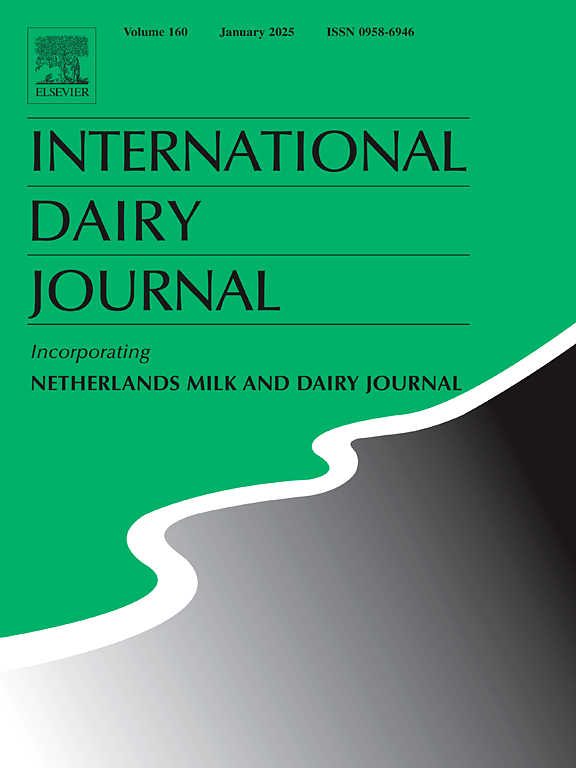利用生理和比较基因组分析对阿尔及利亚山羊皮袋装奶酪Bouhezza中分离的本地乳杆菌菌株的益生菌潜力进行研究
IF 3.1
3区 农林科学
Q2 FOOD SCIENCE & TECHNOLOGY
引用次数: 0
摘要
这项工作旨在从传统的阿尔及利亚Bouhezza奶酪中鉴定新的本土益生菌乳杆菌菌株,在体外生理测试和计算机基因组分析中相互联系。根据酸胆耐受性、疏水性和自聚集性进行初步筛选,筛选出3株植物乳杆菌(B2和R10)和副干酪乳杆菌(FM11)。这些菌株产生了中等程度的生物膜和粘附Caco-2/TC7肠细胞的能力。它们对抗生素敏感,无溶血作用,缺乏毒力因子,能够抑制大肠杆菌和白色念珠菌的生长。基因组分析显示了与胃肠道应激耐受性、上皮细胞粘附和抗菌活性相关的基因,没有抗生素抗性或毒力基因。根据这些结果,Bouhezza奶酪可以被认为是益生菌的新来源,可以开发创新的发酵剂,改善发酵过程和新型功能食品。本文章由计算机程序翻译,如有差异,请以英文原文为准。
Probiotic potential of indigenous Lactobacillus strains isolated from Algerian goatskin bag cheese Bouhezza using physiological and comparative genomic analyses
This work aims to identify new indigenous Lactobacillus probiotic strains from traditional Algerian Bouhezza cheese, interlinking in vitro physiological tests and in silico genomic analyses. Preliminary screenings based on acid bile tolerance, hydrophobicity, and autoaggregation led to the selection of three strains identified as Lactiplantibacillus plantarum (B2 and R10) and Lacticaseibacillus paracasei (FM11). These strains produced a moderate biofilm and ability to adhere to Caco-2/TC7 intestinal cells. They were sensitive to antibiotics, non-hemolytic, lacked virulence factors, and were able to inhibit the growth of Escherichia coli and Candida albicans. Genome analysis revealed genes related to gastrointestinal stress tolerance, adhesion to epithelial cells, and antimicrobial activity, without antibiotic resistance or virulence genes. According to these results, Bouhezza cheese can be considered as a novel source of probiotic bacteria, to develop innovative starters that may improve fermentation processes and novel functional foods.
求助全文
通过发布文献求助,成功后即可免费获取论文全文。
去求助
来源期刊

International Dairy Journal
工程技术-食品科技
CiteScore
6.50
自引率
9.70%
发文量
200
审稿时长
49 days
期刊介绍:
The International Dairy Journal publishes significant advancements in dairy science and technology in the form of research articles and critical reviews that are of relevance to the broader international dairy community. Within this scope, research on the science and technology of milk and dairy products and the nutritional and health aspects of dairy foods are included; the journal pays particular attention to applied research and its interface with the dairy industry.
The journal''s coverage includes the following, where directly applicable to dairy science and technology:
• Chemistry and physico-chemical properties of milk constituents
• Microbiology, food safety, enzymology, biotechnology
• Processing and engineering
• Emulsion science, food structure, and texture
• Raw material quality and effect on relevant products
• Flavour and off-flavour development
• Technological functionality and applications of dairy ingredients
• Sensory and consumer sciences
• Nutrition and substantiation of human health implications of milk components or dairy products
International Dairy Journal does not publish papers related to milk production, animal health and other aspects of on-farm milk production unless there is a clear relationship to dairy technology, human health or final product quality.
 求助内容:
求助内容: 应助结果提醒方式:
应助结果提醒方式:


